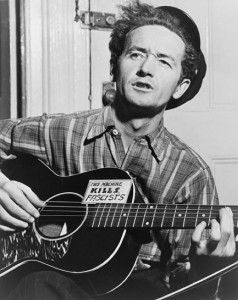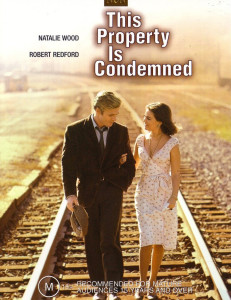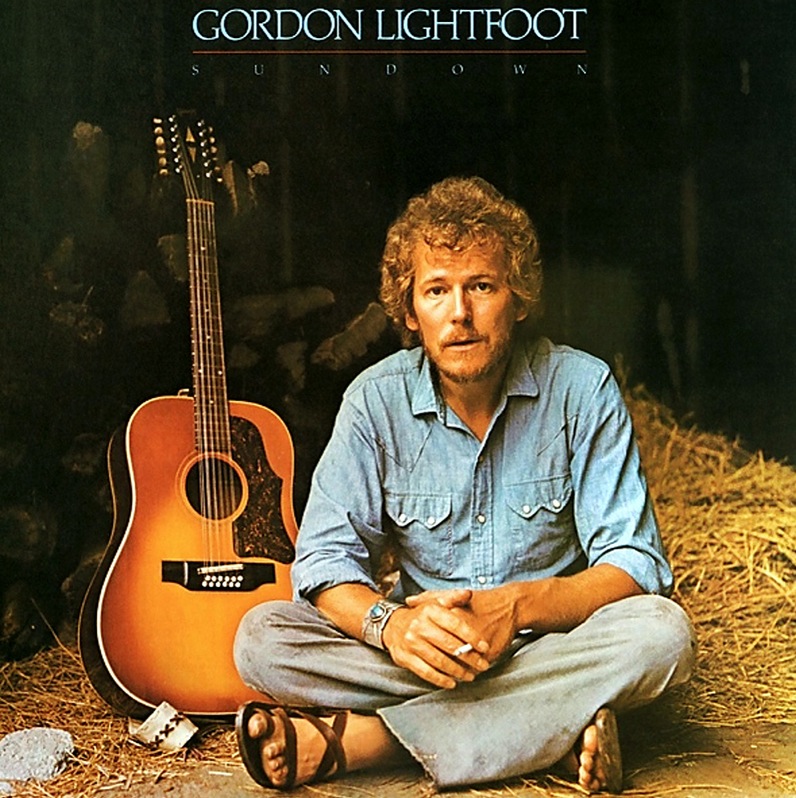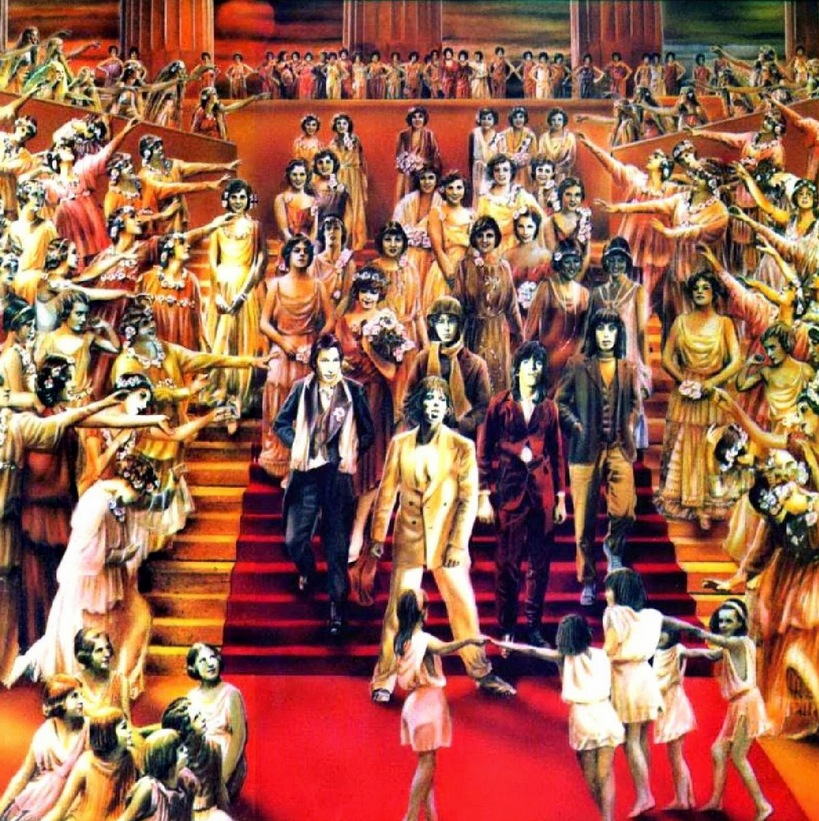As a rocker steeped in the punk/New Wave music of the late 1970s, Patti’s Smith’s sad, solemn “Easter,” with its echo of bagpipes and bells, its chime-like vocals, immediately springs to mind.
I am the spring, the holy ground
The endless seed of mystery
The thorn, the veil, the face of grace
Brazen image, the thief of sleep
It’s a haunting, poetic, triumphant piece of work — one of the few modern songs infused with lyrics so literally inspired by the story of Christ’s ascension to heaven.
But today I found another song named “Easter” that I love nearly as much. This little gem from 2006 was produced by The Prize Fighter Inferno, a side project of Claudio Sanchez, leader of a band called Coheed and Cambria.
I don’t want to run around, run outside your kitchen
In the front yard, outside where the children play.
Sandbox drifting in the land outside you’re missing
Sail until Sunday just till the evening’s gray.
It’s Easter, into the sun, with Cecilia.
It’s Easter, the sun, and Cecilia.
I don’t want to lie against duck-tape cracked or crooked
In the out door, left outside in the rain.
Bus ride longing for the face that I’ve been missing
Seventeen looking for a day I long again.
It’s Easter, into the sun, with Cecilia.
At first listen you may wonder what this song has to do with the spiritual essence of Easter. But study the words. The singer is searching for something beyond the everyday dolor of her life. Maybe her redemption lies in Easter, the sun, and a woman named…Cecilia?
Personally, I want to think the artist is honoring St. Cecilia, the patron saint of music. Born in either the 2nd or 3rd century A.D., she is said to have heard heavenly music inside her heart when she was forced to marry the pagan Valerian.
I hear words and music inside my heart and head every waking moment. Is it always heavenly? Maybe not to some ears. Be it soft and sprightly or thunderous and discordant, it has the power to change wistful to wondrous, raise fire from a spark, and turn morbid depression into delicious melancholy. (There are those among you who will understand that last one.)
But today is about rebirth! So commence with life. As Bob Dylan once sang, “He not busy being born is busy dying.”
Today yer blogger is going to obey St. Bob, as she always does.
© Dana Spiardi, March 27, 2016
The painting in the banner is by Marc Chagall, 1968.
 In 1945 Woody Guthrie married his second wife, Marjorie Greenblatt Mazia, who had been a dancer with the Martha Graham Dance Company in New York. The two met when a choreographer from the troupe developed a dance based on one of Woody’s many whimsical protest songs. Marjorie’s mother just happened to be Aliza Greenblatt, a well-known Yiddish poet. She lived across the street from Woody and Marjorie on Mermaid Avenue in Brooklyn’s Coney Island. Woody and his mother-in-law, known to all as Bubbie, enjoyed a close, collaborative relationship. They shared similar interests – anti-fascism, pro-labor activism, folk lore – and a desire to promote social justice through music and art. Aliza played a large role in the Guthrie household, babysitting the kids and serving Friday night Sabbath dinners. She inspired Woody’s deep appreciation for Jewish history and culture. He likened the struggles of the Jews to those of his fellow Okies and other oppressed people.
In 1945 Woody Guthrie married his second wife, Marjorie Greenblatt Mazia, who had been a dancer with the Martha Graham Dance Company in New York. The two met when a choreographer from the troupe developed a dance based on one of Woody’s many whimsical protest songs. Marjorie’s mother just happened to be Aliza Greenblatt, a well-known Yiddish poet. She lived across the street from Woody and Marjorie on Mermaid Avenue in Brooklyn’s Coney Island. Woody and his mother-in-law, known to all as Bubbie, enjoyed a close, collaborative relationship. They shared similar interests – anti-fascism, pro-labor activism, folk lore – and a desire to promote social justice through music and art. Aliza played a large role in the Guthrie household, babysitting the kids and serving Friday night Sabbath dinners. She inspired Woody’s deep appreciation for Jewish history and culture. He likened the struggles of the Jews to those of his fellow Okies and other oppressed people.
More than thirty years after Woody’s death, his daughter Nora began to dig through The Woody Guthrie Archives, resurrecting the Jewish-themed lyrical poems he had written in 1940s and 50s. These include poems such as “Honeyky Hanukah Time,” written in typically playful Woody style:
It’s Honeyky Hanukah, shaky my hand,
My candles are burning all over this land,
To light the dark road for the man passing by,
It’s Honeyky Hanukah time.
It’s Honeyky Hanukah, kissy my cheek,
The light in my window it burns for a week,
I’ll open my present and take a little peek,
It’s Honeyky Hanukah time.
Nora decided to have Woody’s words set to music, and asked The Klezmatics, an eclectic klezmer band, to carry out the project. The resulting songs were the highlight of a 2003 concert, ”Holy Ground: The Jewish Songs of Woody Guthrie,” staged on the first night of Hanukkah at the legendary 92nd Street Y in New York. In 2010, The Klezmatics released the songs on their album “Wonder Wheel,” which the Grammy Award for Best Contemporary World Music Album at the 49th Grammy awards.
 Nora wants to make sure that these songs cast her father in a much broader light. She once told an interviewer, “He was a poet and lyricist who wrote about everything. I don’t want to see him turned into a freeze-dried, Dust Bowl icon representing a narrow version of what somebody thinks he was. These songs are just one more facet of his work that will add to a fuller picture of him as a songwriter.”
Nora wants to make sure that these songs cast her father in a much broader light. She once told an interviewer, “He was a poet and lyricist who wrote about everything. I don’t want to see him turned into a freeze-dried, Dust Bowl icon representing a narrow version of what somebody thinks he was. These songs are just one more facet of his work that will add to a fuller picture of him as a songwriter.”
If I had it my way, every grade school child in America would be required to spend an entire week immersed in the life and times of Woodrow Wilson Guthrie. He was one of America’s purest souls and most accomplished folk heroes — an artist, activist, diarist, humorist, humanitarian, and rabble-rouser. If you’re a lover of music, if you believe that music has the power to incite, to inspire, and to change the world, please remember Woody today on his 103rd birthday.
Here are some delightful lyrics from another of Woody’s Jewish-themed poems, “Mermaid Avenue:”
Mermaid Avenue that’s the street
Where the lox and bagles meet,
Where the hot dog meets the mustard
Where the sour meets the sweet;
Where the beer flows to the ocean
(Where the halvah meets the pickle)
Where the wine runs to the sea;
Why they call it Mermaid Avenue
That’s more than I can see.
Please watch this beautiful video of my favorite Woody song, “So Long, It’s Been To Know You,” from the Library of Congress recording:
© Dana Spiardi, July 14, 2015
]]>
 Rick wrote “Garden Party” in response to being booed by audience members at a 1971 oldies show in Madison Square Garden (a “Garden Party”). He was there to perform a few of his many hit songs from the late 1950s, and opened with one of his biggest, “Hello Mary Lou.” He then set out to play newer material, starting with a rendition of the Rolling Stones’ “Country Honk.” Fans, expecting to hear his earlier work, began to boo (many think it actually stemmed from some sort of police presence within the crowd). Rick took it personally and stormed off the stage.
Rick wrote “Garden Party” in response to being booed by audience members at a 1971 oldies show in Madison Square Garden (a “Garden Party”). He was there to perform a few of his many hit songs from the late 1950s, and opened with one of his biggest, “Hello Mary Lou.” He then set out to play newer material, starting with a rendition of the Rolling Stones’ “Country Honk.” Fans, expecting to hear his earlier work, began to boo (many think it actually stemmed from some sort of police presence within the crowd). Rick took it personally and stormed off the stage.
Nelson was so rattled by the crowd’s reaction that he penned “Garden Party,” making not-so-thinly veiled references to all kinds of performers. Here is a sampling of the lyrics:
To reminisce with my old friends: Chuck Berry, Bo Diddley and Bobby Rydell, who were also on the oldies show bill.
Yoko brought a walrus: John Lennon (a nod to his song “I Am the Walrus.”)
I said hello to Mary Lou, she belongs to me: a reference to Rick’s hit, and also to Bob Dylan’s “She Belongs to Me,” a song he once covered.
I sang a song about a honky tonk: The Stones song “Country Honk,” which supposedly incited the booing.
Out stepped Johnny B. Goode…playing guitar like a-ringing a bell: another reference to Chuck.
But who was the Mr. Hughes hiding in Dylan’s shoes? People assumed it was the reclusive Howard, but it was actually a reference to Rick’s next-door neighbor George Harrison, who sometimes used the alias “Mr. Hughes.” The former Beatle had planned to release an album of Dylan covers.
He ended the tale with:
If you gotta play at garden parties
I wish you a lotta luck.
But if memories were all I sang
I’d rather drive a truck (a reference to Elvis, who was once told at an audition: “Stick to driving a truck, because you’ll never make it as a singer.”)
Nelson eventually recovered and continued to perform. In all, he released 19 Top Ten hits between 1957 and 1973, and was posthumously inducted into the Rock and Roll Hall of Fame in 1987.
He died in a plane crash on December 31, 1985, at the age of 45. A variety of chemicals, including cocaine, marijuana, and the painkiller Darvon, were found in Nelson’s blood after the accident. It’s long been rumored that he and fellow passengers set the private plane ablaze while freebasing cocaine, but the National Transportation Safety Board rejects the claim.
What a sad demise for the boy from the so-called idyllic “Ozzie and Harriet” household.
Here’s Rick’s pretty song with the pointed lyrics. Did he overreact to the oldies show incident? Probably, but the song it inspired earned him a nice penny.
© Dana Spiardi, May 7, 2015
]]> Oh, take me on a journey to a place where I can lay my burden down, legalize my lows, and let the music wash my soul. In other words, “Take Me to the Mardi Gras.” That’s the name of a song written and recorded by Paul Simon for his 1973 “There Goes Rhymin’ Simon” LP. Paul may not possess one drop of Cajun/Creole blood, but his love song to The Big Easy is as soulful to me as that of any N’awlins native. It’s one of those songs that makes my heart ache with dreams of escaping to a place of primordial pleasure, a place where a swampy voodoo vibe percolates just beneath the surface of even the most festive of ceremonies. Bawdy New Orleans is just such a place — perhaps the most culturally unique city in America.
Oh, take me on a journey to a place where I can lay my burden down, legalize my lows, and let the music wash my soul. In other words, “Take Me to the Mardi Gras.” That’s the name of a song written and recorded by Paul Simon for his 1973 “There Goes Rhymin’ Simon” LP. Paul may not possess one drop of Cajun/Creole blood, but his love song to The Big Easy is as soulful to me as that of any N’awlins native. It’s one of those songs that makes my heart ache with dreams of escaping to a place of primordial pleasure, a place where a swampy voodoo vibe percolates just beneath the surface of even the most festive of ceremonies. Bawdy New Orleans is just such a place — perhaps the most culturally unique city in America.
 I know that if I were to actually join in with hordes of drunken, obnoxious revelers who celebrate today’s touristy Mardi Gras, my dreams would be shattered. But as a kid I was totally entranced by exotic images of dusky dancers in feathers and masks. Like Natalie Wood’s restless Alva Starr character in the film “This Property is Condemned,” I was captivated by the idea of running away to the city of New Orleans. Balconies with wrought iron railings, little Creole shanties, shotgun houses, grand cemeteries where the souls sleep above the earth. I finally got to visit The Big Easy in November 1984 with a video crew to document an industrial process. I ate turtle soup, drove across the bridge named for one of my favorite demagogues (Huey P. Long), watched a po’ boy dance on the corner for chump change, and wondered where Fats Domino lived.
I know that if I were to actually join in with hordes of drunken, obnoxious revelers who celebrate today’s touristy Mardi Gras, my dreams would be shattered. But as a kid I was totally entranced by exotic images of dusky dancers in feathers and masks. Like Natalie Wood’s restless Alva Starr character in the film “This Property is Condemned,” I was captivated by the idea of running away to the city of New Orleans. Balconies with wrought iron railings, little Creole shanties, shotgun houses, grand cemeteries where the souls sleep above the earth. I finally got to visit The Big Easy in November 1984 with a video crew to document an industrial process. I ate turtle soup, drove across the bridge named for one of my favorite demagogues (Huey P. Long), watched a po’ boy dance on the corner for chump change, and wondered where Fats Domino lived.
Paul Simon recorded “Take Me to the Mardi Gras” at the legendary Muscle Shoals Studios, located in Sheffield, Alabama. It features guitarists Jimmy Johnson and Pete Carr, bassist David Hood, drummer Roger Hawkins, and The Onward Brass Band. The falsetto back-up voice is that of Rev. Claude Jeter, who sang with the Gospel group The Swan Silvertones.
 Paul’s “Graceland” album may be considered his masterpiece, but I always preferred “Rhymin’ Simon” (and his first solo album, as well). The entire LP has a warm full-bodied sound like no other Simon production. (No wonder Muscle Shoals was a favorite among musicians, from The Rolling Stones to Elton John.) The album kicks off with the sprightly “Kodachrome,” a sort of anthem for me, back when I bought my first point-and-shoot camera and saved my pennies for those 12-exposure rolls of Kodak 126 film.
Paul’s “Graceland” album may be considered his masterpiece, but I always preferred “Rhymin’ Simon” (and his first solo album, as well). The entire LP has a warm full-bodied sound like no other Simon production. (No wonder Muscle Shoals was a favorite among musicians, from The Rolling Stones to Elton John.) The album kicks off with the sprightly “Kodachrome,” a sort of anthem for me, back when I bought my first point-and-shoot camera and saved my pennies for those 12-exposure rolls of Kodak 126 film.
And I can’t think of another song that so raucously expresses mother’s love quite like “Loves Me Like a Rock,” with its knee-bouncing rhythm and rich vocal harmonies of The Dixie Hummingbirds. Then there are the quieter gems like “Tenderness” (I know you see through me, but there’s no tenderness beneath your honesty), “St. Judy’s Comet” (a song Paul penned for his infant son Harper), “American Tune” (and I dreamed that my soul rose unexpectedly, and looking back down at me, smiled reassuringly), and “Something So Right” (some people never say those words ‘I love you,’ but like a child they’re longing to be told).
But today belongs to Mardi Gras, so I’ll leave you with this gem from the talented Mr. Simon. Laissez les bons temps rouler!
© Dana Spiardi, Feb 17, 2015
]]>
 Okay, I’m over-thinking it. But, it was those very words from Gordon Lightfoot’s #1 hit “Sundown” that determined which album I’d buy with my birthday money in 1974. I had narrowed the field down to three in late October of that year: Eric Clapton’s “461 Ocean Boulevard,” The Rolling Stones’ “It’s Only Rock and Roll,” and Gordon’s “Sundown.”
Okay, I’m over-thinking it. But, it was those very words from Gordon Lightfoot’s #1 hit “Sundown” that determined which album I’d buy with my birthday money in 1974. I had narrowed the field down to three in late October of that year: Eric Clapton’s “461 Ocean Boulevard,” The Rolling Stones’ “It’s Only Rock and Roll,” and Gordon’s “Sundown.”
Clapton’s LP featured his cover of Bob Marley’s “I Shot the Sheriff,” which provided me with my first taste of reggae. I was intrigued by it. Critics were optimistic about “Ocean Boulevard” because Clapton had recorded it as a newly-clean musician, having just kicked his three-year heroin addiction. I already owned a lot Clapton records from his Cream and Derek and the Dominos heyday; I’d buy this later.
 The Stones’ “It’s Only Rock and Roll” yielded one single, the title song. I’d already got my rocks off with the Stones’ masterful four-pack that began with 1969’s “Let it Bleed” and steamrolled through “Exile on Main Street” in 1972. Could their vinyl output get any better? I didn’t think so. I’d pass on this one. It was actually the fabulous album cover that piqued my interest. It was designed by Guy Peellaert, who, along with music writer Nik Cohn, had published a delicious book of fantasy rock star art called “Rock Dreams.”
The Stones’ “It’s Only Rock and Roll” yielded one single, the title song. I’d already got my rocks off with the Stones’ masterful four-pack that began with 1969’s “Let it Bleed” and steamrolled through “Exile on Main Street” in 1972. Could their vinyl output get any better? I didn’t think so. I’d pass on this one. It was actually the fabulous album cover that piqued my interest. It was designed by Guy Peellaert, who, along with music writer Nik Cohn, had published a delicious book of fantasy rock star art called “Rock Dreams.”
In the end I chose Gordon’s folky “Sundown,” his only #1 hit album in the U.S. It was a bit of a departure for me at that time. The only material of this quasi-acoustic nature that I played with regularity came from Bob Dylan. In 1974 I was swept up in Bowie’s world of decadent dystopia (I had recently purchased “Diamond Dogs,” which featured songs like “1984” and “We are the Dead”), and was beginning my obsession with Queen’s sartorially scrumptious Freddie Mercury following the band’s release of “Killer Queen.” Dynamite with a laser beam.
Other than the title track, which influenced my buying decision, I wasn’t familiar with a single song on the “Sundown” album when I bought it at the Penn Traffic (“PT”) department store during a shopping trip with my mom a few days before my 15th birthday. In fact, up until then I wasn’t acquainted with any of his work, other than the sad, dreamy “If You Could Read My Mind.” But I ended up loving that particular birthday album and played it often. Songs like “Circle of Steel” and “The Watchman’s Gone” were rainy-day moody tunes. And oh, his low-key earthy voice really got to me. Bob Dylan once said, “I can’t think of any Gordon Lightfoot song I don’t like. Every time I hear a song of his, it’s like I wish it would last forever. ”
 So who was the hard lovin’ woman of “Sundown” who made her man feel so mean? It’s long rumored to have been groupie/backup singer Cathy Smith, who later went to prison for injecting John Belushi with a fatal dose of heroin and cocaine in 1982. Gordon said she was “the one woman in my life who most hurt me.” I guess she did a lot of damage in rooms where you do what you don’t confess.
So who was the hard lovin’ woman of “Sundown” who made her man feel so mean? It’s long rumored to have been groupie/backup singer Cathy Smith, who later went to prison for injecting John Belushi with a fatal dose of heroin and cocaine in 1982. Gordon said she was “the one woman in my life who most hurt me.” I guess she did a lot of damage in rooms where you do what you don’t confess.
Here’s the gorgeous “Circle of Steel.” With lyrics like “a child is born to a welfare case, where the rats run around like they own the place,” maybe Gordo’s work isn’t really so far removed from Bowie’s songs of post-apocalyptic society.
Here’s Gordon with a live version of “Sundown.” It has a sexy vibe, don’t you think?
© Dana Spiardi, Nov 17, 2015
]]>